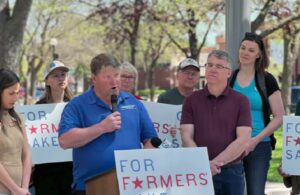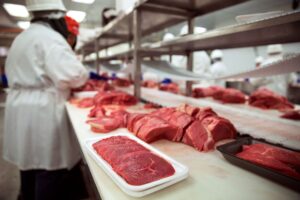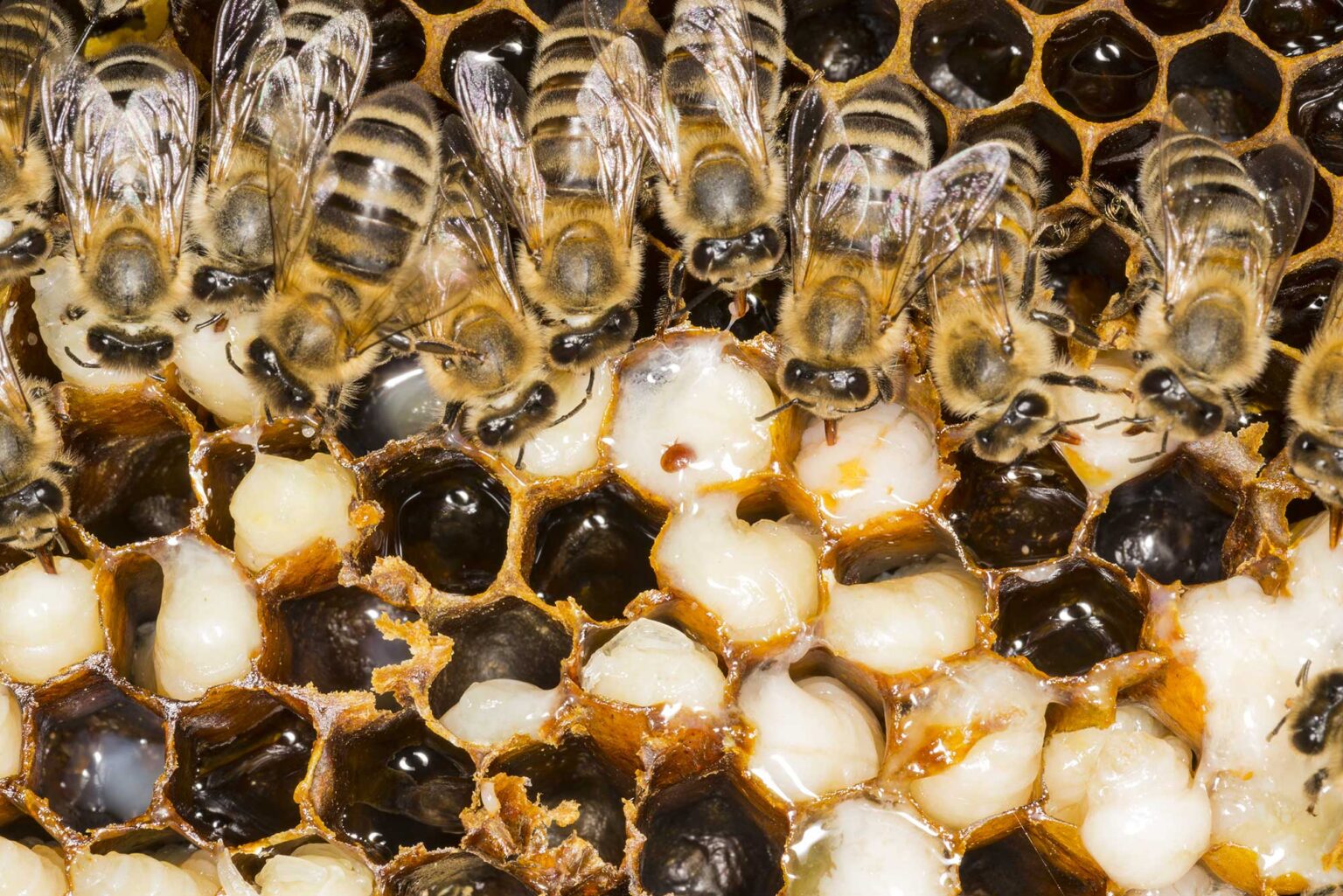Subscribe to Updates
Get the latest agriculture news and updates directly to your inbox.
Author: staff
Key Takeaways Corn harvest reached 18%, with one top state still reporting 0% progress.Soybean condition improved week-over-week, with harvest reaching 19%.Winter wheat planting reached 34%, with emergence at 13%. Today, the USDA published the 26th Crop Progress report of the 2025 growing season. Here’s a look at the latest corn, soybean, and winter wheat numbers. Corn As of Sept. 28, 95% of the corn crop across the country’s top 18 growing states had reached the dent stage. Progress is 1 percentage point shy of the five-year average. Across all states, 71% of the crop had reached maturity, putting progress 3 points behind the five-year average.…
The U.S. Environmental Protection Agency has approved the registration of Norroa, the first-ever RNA-based treatment for varroa mites, the leading threat to honeybee colonies. The new product from GreenLight Biosciences comes as existing chemical acaricides and miticides become less effective and reliable against varroa mites, creating a threat to the broader agriculture system. Norroa’s RNA interference technology precisely targets varroa mites, breaking down safely in the hive and environment within days. Field trials demonstrated over 90 percent success in mite prevention, supporting hive health and more resilient pollination across more than 100 U.S. crops. A product like this couldn’t come…
What’s Happened In August, I wrote about five fundamentals to monitor regarding corn and soybean futures, as that month can be a significant turning point for corn and soybean prices. We discussed how prices were at a tipping point where either a rally may begin to occur, or a lack of friendly fundamental news could send prices capitulating lower. The fundamentals we monitored then led to a rally for August into September. Now is time to shift focus for the next big fundamentals to monitor as the calendar flips to October. From a Marketing Perspective Here are the three fundamentals…
The National FFA Organization, hosted its third Next Gen Conference of the year in Fargo, N.D. from September 9-13. Next Gen Conferences provide FFA members the opportunity to explore career options within the industry of agriculture. The September conference brought together 70 high school sophomores, juniors and seniors from 21 states to learn more about emerging technologies in the agricultural space through informational sessions, panel discussions, and tours. The Next Gen Conference: Emerging Technologies tour locations in Fargo included: CNH Industria John Deere Cargill Grand Farm Innovation Campus (Demos with Autonomous Nation Conference)Each tour stop is carefully planned to provide…
Daniel Gross normally changes tires on his sprayer three times during the growing season, a job that normally requires two people. “We usually use the massive hoist in our large shop, but the hoist is in use 80–90% of the time, so I had to come up with a different solution,” he said. He constructed a basic frame for the load forks to engage. Then he added a swiveling tube long enough to handle his largest tire. He made two grapples to grab the tire. Two 16-inch cylinders squeeze the tire, and a 12-inch cylinder on one side of the…
By Peter Hobson and Tom Polansek CANBERRA/CHICAGO, Sept. 29 (Reuters) – Australian beef has replaced U.S. supply in China since President Donald Trump returned to the White House, funneling hundreds of millions of dollars that have in previous years gone to the U.S. cattle industry into Australian pockets. U.S. shipments to China, worth around $120 million a month, collapsed after Beijing in March allowed permits to expire at hundreds of American meat facilities and as Trump unleashed a tit-for-tat tariff war. Other U.S. farm exports to China, the world’s biggest food importer, have also suffered since Trump retook power. On soybeans alone, U.S. farmers have lost out on shipments worth billions…
From G.T., via email I’ve been wanting my husband to get an estate plan done since we were 50 years old. Now we are 65, and my husband is still dragging his feet. He says that I can quit nagging him, but it bothers me, knowing we have a nice farm and three children. I don’t want to be a nag, but I want this estate planning done! Our son and grandson, who farm with us, would like to have a plan in place, but they hesitate to rock the boat. What can I do? — From G.T., via email…
By Paul Hammel LINCOLN — A Kansas pipeline company is about to activate its $1.5 billion pipeline to transport carbon dioxide from ethanol plants in Nebraska and Iowa to a sequestration site in Wyoming and, along with it, launch a first-of-its-kind program to share some proceeds with rural communities along the pipeline route. On Tuesday, officials with Tallgrass Energy said they would soon be shipping CO2 from the first of 11 ethanol plants connected to its pipeline — a converted, former natural gas pipeline — for a 392-mile trip across Nebraska, Colorado, Iowa, and Wyoming. In conjunction with the launch,…
By Brenna Ellison, Jonathan Coppess, and Maria Kalaitzandonakes From the reconciliation farm bill to drastic changes in spending and priorities at USDA in the second Trump Administration, American food and agricultural policy is experiencing an unusual amount of turbulence and upheaval. Added to this are demands from the “Make America Healthy Again” (MAHA) movement about different aspects of the food system (Farmdoc Daily, Sept. 8; Sept. 17). In this post, we explore changes in public perceptions on USDA spending priorities using results from the Gardner Food and Agricultural Policy Survey (GFAPS) from both May 2022 and August 2025, evaluating how recent policy…
By Anne Braly No one understands the partnership between the earth and its people better than those who steward the land. But for generations, farmers in the Volunteer State could not make direct sales to the public of temperature-controlled foods or canned goods. That changed in 2022 when state lawmakers passed the Tennessee Food Freedom Act. The bill allowed farmers and other cottage-food producers to sell certain homemade, nonperishable foods, including baked goods and jams, with no need for inspection or licensing. Recently, the Tennessee House of Representatives expanded Tennessee’s cottage-food laws with the passage of HB130, enabling Tennessee farmers and…







:max_bytes(150000):strip_icc()/54674573279_7f5f19cb13_o-1bf87bd5c6c345878feac57aebad1f63.jpg)

:max_bytes(150000):strip_icc()/Kevin20Mathews20Beans-be842b913b08486f8b1303bc17e4c5cf.png)

:max_bytes(150000):strip_icc()/SuccessfulFarmingShareImage-8fed6410b43147a19ed5ea1e3243227f.png)
:max_bytes(150000):strip_icc()/101052371_beef_cattle-bb5de8ba004c4197a2765a15eb35678e.jpg)
:max_bytes(150000):strip_icc()/ProblemArtSEPT25-aafc386e6c3a457b8fda727f586bf0bc.jpeg)
:max_bytes(150000):strip_icc()/54422218704_4306ac9563_o-233521f62c594e098877df4c9a3cba63.jpg)
:max_bytes(150000):strip_icc()/6895916340_5f396535f9_o-972ad5a673d34233ba418fcaee4f3f33.jpg)
:max_bytes(150000):strip_icc()/100089765_chickens_eggs-3508d2a2120b4d928c58b453b9fff6e0.jpg)